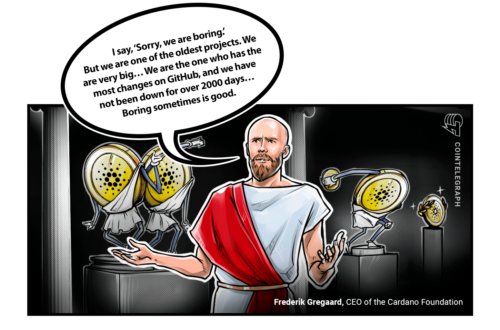
If you followed bitcoin mining news over the last two weeks, you may have seen social media chatter about how the practice doesn’t actually use as much electricity as you’ve been led to believe.
And that is true, based on the Cambridge University Bitcoin Electricity Consumption Index (CBECI), which gives daily estimates on the network’s energy demands.
Upon revising the popular index on Aug. 31, researchers realized that previous assumptions regarding Bitcoin’s energy consumption had previously been overstated.
For example in 2021, when bitcoin mining was extremely profitable, Cambridge’s previous model estimated that the network sucked up 104 terawatt-hours (TWh) of electricity. The revised model shows that Bitcoin consumed 89 TWh, representing a 15 TWh difference.
Based on data from the US Energy Information Administration, 15 TWh could power over 1.4 million average American homes in a year.
Following these revelations, Daniel Batten, the co-founder of climate conscious CH4 Capital, took to X, formerly Twitter, to say “the tide has turned in the narrative around Bitcoin & energy.”
OK I’m calling it
The tide has turned in the narrative around Bitcoin & energy
In last 90 days
– Cambridge admit #Bitcoin energy calculations overstated
– 2 academic papers (incl MIT) state environmental benefits to Bitcoin
– KPMG report Bitcoin has positive ESG rating— Daniel Batten (@DSBatten) August 31, 2023
JPMorgan also responded to Cambridge’s downshift of Bitcoin’s energy footprint, lowering its bitcoin production cost estimate to $18,000 from $21,000.
But why did Cambridge researchers change the methodology of the CBECI? Alexander Neumüller explains.
Why the sudden pivot?
Neumüller is a research associate at the Cambridge Center for Alternative Finance, where he leads all investigations into the climate impact of digital assets, including Bitcoin.
Neumüller told Blockworks that researchers needed to revise the CBECI to more accurately reflect how different mining machines contribute to the overall hash rate.
The previous model assumed that all miners, no matter how powerful, were contributing equally to the network hash rate.
“This doesn’t make sense,” Neumüller said bluntly.
Neumüller explained that the computing power of ASICs — a type of dedicated hardware used to mine bitcoin and other proof-of-work cryptocurrencies — has drastically increased in the last several years.
For example, Bitmain’s Antminer S9 from 2016 had a hash rate of 11.5 terahashes per second (TH/s), whereas the Bitmain S19 XP Hydro from 2022 achieved 260 TH/s.
Additionally, the previous model factored in all mining machines that were profitable, which ended up skewing electricity consumption numbers during times of superb mining profitability.
Neumüller referenced older mining machines like Bitmain’s Antminer S5, released in 2014 with a hashrate 1.155 TH/s, which obviously don’t require as much energy as the current top-of-the-line models.
“Suddenly mining profitability spiked in 2021,” Neumüller told Blockworks. “I think an […] Antminer S5 was still profitable. And what that means is that suddenly, an S5 fueled an equal amount of hash rate as a much newer device.”
“The most recently released devices by that time were already having up to 100 terahashes. So this was the issue,” Neumüller added.
Considering this explosion in hashing prowess, the model for calculating electricity consumption had to change.
Now, the CBECI doesn’t consider miners that aren’t profitable at “reasonable electricity rates.” It also takes into account the age of mining equipment and how devices tend to depreciate in value.
Many public mining companies, Neumüller explained, use a five-year depreciation schedule for their hardware. This means that a brand new device’s value drops 20% each year until it’s considered practically obsolete after five years in operation.
Neumüller posits that when a miner’s value decreases, it contributes less to the overall network hash rate and subsequently consumes less energy. So, even if a miner older than 5 years remains profitable, it won’t be accounted for in the CBECI.
That assumption briefly sums up the new model for the CBECI, and according to Neumüller, it avoids the previous trap of old mining machines being erroneously included in the index.
That was what was leading to the overstated electricity consumption, especially since 2021.
“It’s really more […] how can we find an anchor that helps us to account for much older machines being less weighted than the new machines. Because in the end, that helps us to associate the right weight in terms of what drives hashrate,” Neumüller told Blockworks.



